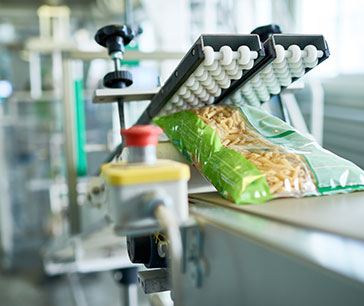Table Of Contents

Yerukola Eswara Prasad

Akhilesh Animesh Prabhugaonkar
How Shifting to Bio-Plasticizers Will Help in Reviving Your Business

Plasticizers, as the name suggests, are substances which, when applied, offer plastic-like properties to an object. To be precise, plasticizers are generally solvents that are added to synthetic or polymer resins before applying them to objects. These solutions then impart plasticity and softness to the said object and reduce its brittleness and friction coefficient. Plasticizers, apart from being the main raw materials for plastic manufacturing, are also used in manufacturing rubber products.
Applicability of bio-plasticizers in different industries
The issue of environmental degradation has led to a huge criticism of plastics and plastic products owing to their role in environmental pollution. Plasticizers have also been subjected to this criticism. Owing to this, bio-plasticizers have come up in the market to suit the needs of society. Two industries which have been the biggest users of plasticizers are the food packaging industry and the healthcare sector. Bio-plasticizers are used in manufacturing of almost every food packaging variant including bottles, wraps, containers, foils, sachets, etc. Since bio-plasticizers have low toxicity, there are trusted materials for food packaging. In fact, this is one main reason why they are also used for manufacturing medical devices. Another important advantage of using bio-plasticizer in medical devices is that they offer the flexibility which is necessary for medical implants such as catheters and tubes.

Bio-plasticizers: Transforming Industries with Sustainability
Plasticizers are commonly added to polymers including plastics and rubber to meet various end-user applications with enhanced material handling capabilities. Unlike traditional plasticizers, bio-plasticizers are derived from renewable resources such as starches, plant oils, and biomass, providing an environment-friendly alternative for enhancing the flexibility and durability of materials used for various applications such as packaging, manufacturing medical devices, and many more. These days, many medical device manufacturers have started using bio-plasticizers for producing a wide range of products such as surgical gloves, IV tubes, implantable devices, catheters, and many others.
Moreover, bio-plasticizers have created waves in the packaging sector. It can be used in various packaging materials such as films, containers, wraps, and bottles. Along with providing improved flexibility and mechanical properties, these materials can help reduce carbon footprint compared to conventional fertilizers. This has promoted their use in the food and beverage sector by offering more eco-friendly and safer product packaging.

Embracing eco-friendly approaches: cutting-edge product launches
Gauging the rising environmental awareness across the globe, many chemicals manufacturing companies have started developing green chemicals such as bio-plasticizers and have even launched their own products. For instance, BASF, in April 2021, announced the launch of a series of biomass balanced (BMB) plasticizers which instead of using fossil resources, make use of biogas and bio-naptha.
Similarly, in October 2021, Cargill, a leading food corporation, announced the launch of a bio-based plasticizer called Biovero. As per the company statement, the launch of Biovero will help Cargill to address the demands of the industrial sector comprehensively in the near future. Such product launches have helped the companies to increase their footprint across the globe and have ultimately benefited the industry in widening its scope.

Growing demand for bio-plasticizers from different corners
The rising demand for bio-plasticizers from the global food packaging and healthcare industries is predicted to help the global bio-plasticizers industry to surge ahead. Furthermore, in the past few years, even the automotive and the construction sectors have witnessed heightened demand for bio-plasticizers which have created numerous growth opportunities in the industry.
Segmental analysis of the sector shows that based on product, the succinic acid segment is predicted to be the fastest growing segment with a CAGR of 6.0% from 2022 to 2032. On the other hand, when studied on the basis of application, the consumer goods segment is expected to have a CAGR of 6.2% during the same period. Regional analysis of the industry puts India at the top of the table with a CAGR of 6.5% in the forecast period.
All in all, bio-plasticizers, just like most other renewable and bio-based materials, have seen huge increase in demand owing to rising environmental awareness around the world. Furthermore, the widespread applicability of the component in different end-use industries and innovative product launches by major companies will help in the expansion of the bio-plasticizers industry in the next few years.
For greater insights on how the adoption of bio-plasticizers will help revitalize your business, feel free to contact us. We can also help your business identify potential investment opportunities across various regions.

